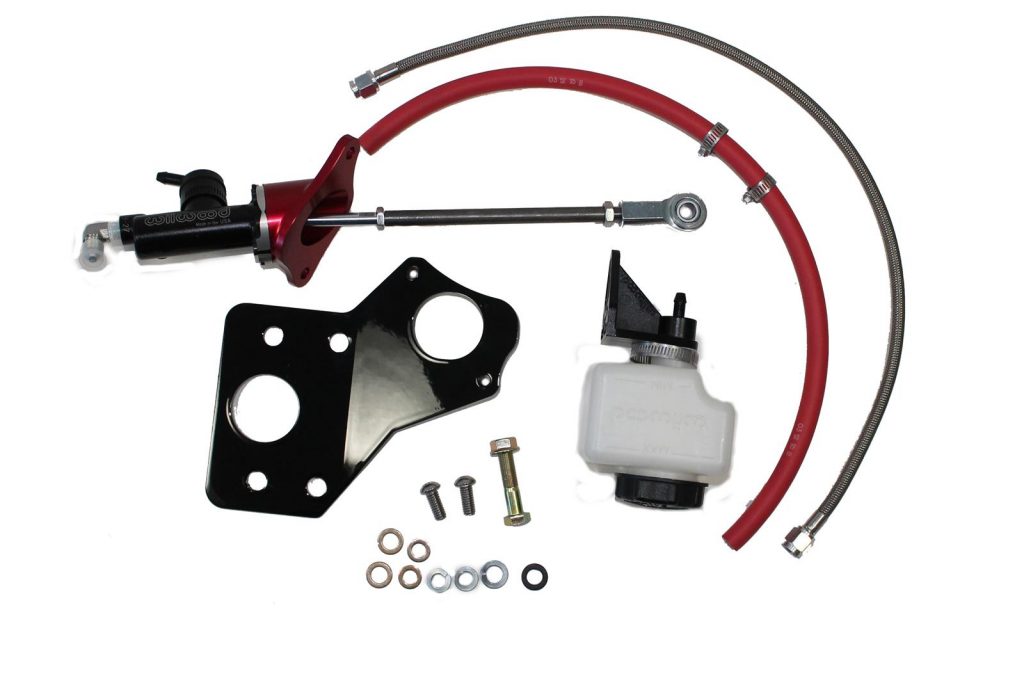
Hydraulic clutch throwout bearing conversion kits deliver smooth action, improved header clearance, and reduced free travel. Available for many popular applications, from Ford Model A to late-model muscle, they require a few modifications and work with stock and aftermarket transmissions. Where there’s no bolt-on option, there are still plenty of clutch master cylinders, hydraulic release bearings, and slave cylinders to accommodate most vehicles with a little ingenuity. Matching the right components will not only give you the best pedal feel, but also prevent clutch mechanism damage.
Let’s look at several key points for understanding proper pedal ratio, bore sizing, travel, and mounting angle.
Pedal ratio is the amount of leverage your clutch pedal exerts over the master cylinder. On average, clutch pedal ratios range from 5.0-7.0:1. To determine the pedal ratio, measure the pedal pad to the pivot, then measure from the master cylinder rod mount to the pivot and divide the second measurement into the first. The higher the ratio, the more leverage you will have over the clutch. This will decrease pedal effort and increase travel; the opposite will apply to lower pedal ratios.
Master cylinder bore size determines the amount of fluid that will be displaced as the clutch is depressed. With equal travel, a 7/8-inch master moves more fluid than a 3/4-inch master. While a larger-bore master cylinder displaces more fluid, it takes more pedal force to create the same pressure as a smaller-diameter bore.
Master cylinder travel is the distance the master cylinder piston can travel before it bottoms out. A pedal stop must be used to limit stroke to prevent clutch, release bearing, and transmission damage.
Mounting angle is critical to smooth operation and master cylinder longevity. Mount the master cylinder so the pushrod maintains a straight approach into the master cylinder throughout the pedal’s range of movement. Excessive angles can cause binding and premature wear; the exception to this would be a master cylinder that pivots on its mount like a Tilton 78-series.
Always follow master cylinder sizing recommendations for the hydraulic throwout bearing or slave cylinder. The goal is to have a balanced system that uses the majority of the master cylinder stroke with a pedal that comfortably disengages the clutch.

[…] Hydraulic clutch throwout bearing conversion kits deliver smooth action, improved header clearance, and reduced free travel. Available for many popular applications, from Ford Model A to late-model muscle, they require […] Read full article at http://www.onallcylinders.com […]
Have it instaled on my civic! One of the best parts of my baby
Putting a nv5600 in a 1999 ford f250 Super duty